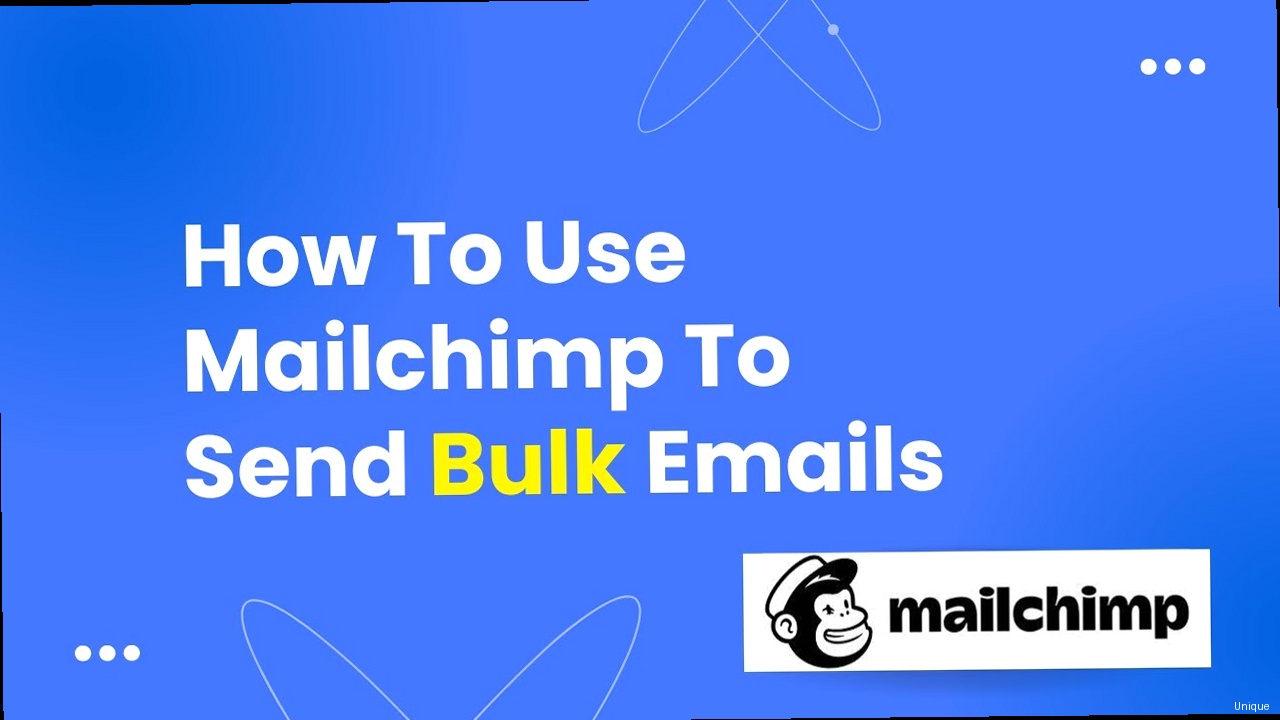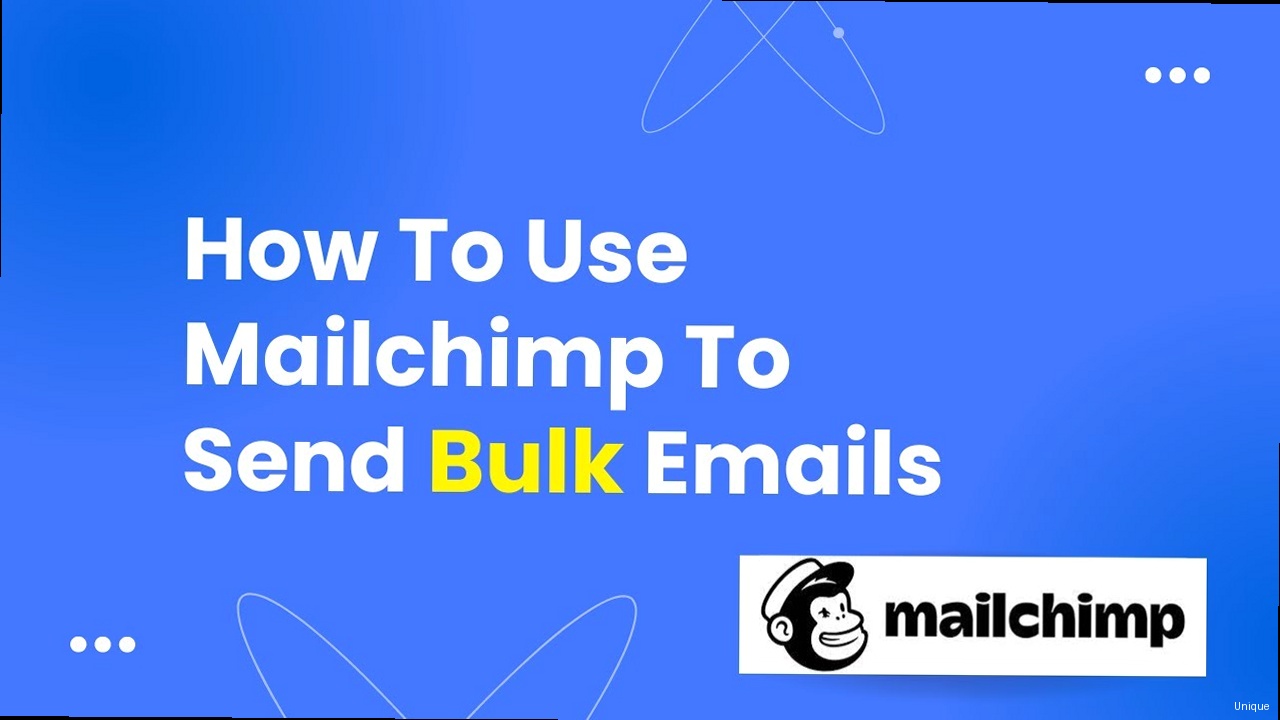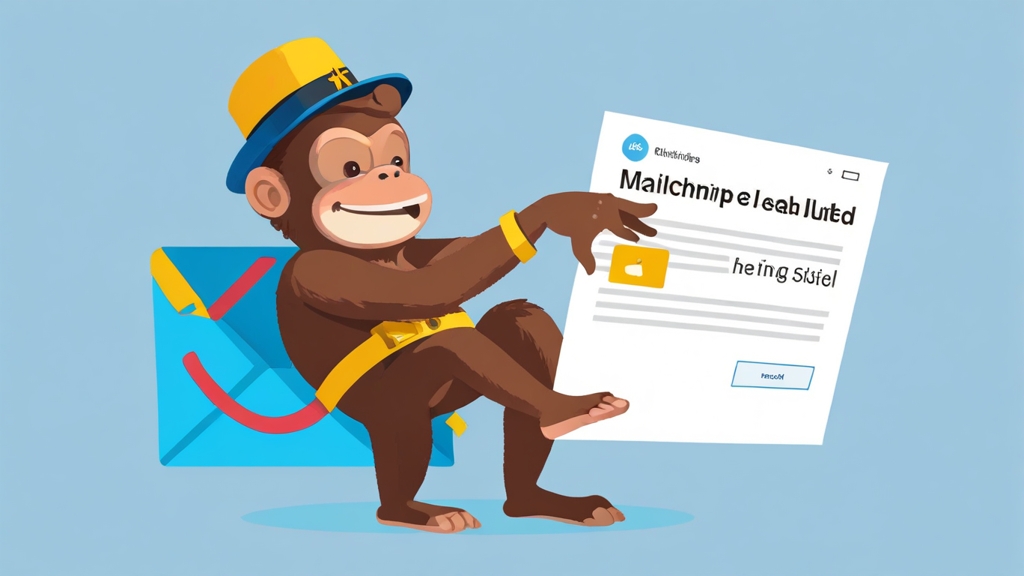How to Send Bulk Emails Effectively with Mailchimp
Mailchimp is a powerful platform for managing and sending email marketing campaigns. This article provides a practical guide to using Mailchimp to send bulk emails, focusing on best practices to ensure your messages reach your audience’s inboxes and achieve optimal engagement. We’ll cover audience segmentation, campaign setup, content optimization, and essential delivery tips to maximize your email marketing success.
Table of Contents
- Audience Segmentation: Targeting the Right People
- Campaign Creation: Setting Up Your Bulk Email
- Content Optimization: Crafting Engaging Emails
- Delivery Optimization: Ensuring Inbox Placement
Audience Segmentation: Targeting the Right People

Effective bulk emailing starts with understanding your audience and segmenting your email list. Sending the same message to everyone can lead to low engagement and even spam complaints. Segmentation allows you to tailor your content to specific groups, increasing relevance and improving your campaign’s performance. Mailchimp offers a variety of tools for segmenting your audience, ranging from simple demographic filters to more complex behavioral targeting.
Understanding Audience Data
Before you start segmenting, it’s crucial to understand the data you’ve collected about your subscribers. This includes information like location, purchase history, signup date, and engagement metrics (opens, clicks). Mailchimp automatically tracks some of this data, but you can also add custom fields to collect more specific information relevant to your business. Regularly review your audience data to identify trends and opportunities for segmentation.
Example 1: Identifying Top Customers. You can use Mailchimp’s “Purchase Activity” data to create a segment of customers who have spent over $100 in the past year. This allows you to send exclusive offers or loyalty rewards to your most valuable customers. To do this in Mailchimp, navigate to Audience > Segments > Create Segment. Under “Contacts match,” select “any” and then add the criteria “Purchase Activity | Total spent | is greater than | 100”. Example 2: Segmenting by Location. If you have subscribers from different regions, you can segment your list by location to send targeted promotions or event invitations. Mailchimp uses IP addresses to automatically determine the location of your subscribers. In the segment creation screen, select “Location | Country is | United States” (or any other country).Creating Segments in Mailchimp
Mailchimp offers two primary methods for segmenting your audience: segments and tags. Segments are dynamic and based on criteria that are evaluated each time you send a campaign. Tags are static labels that you manually apply to subscribers. For bulk emailing, segments are generally preferred because they automatically update as subscriber data changes. To create a segment, navigate to “Audience” > “All contacts” > “Segments” > “Create Segment”. You’ll then be presented with a variety of options for defining your segment criteria.
- Static Segment : A one-time snapshot of your audience based on selected criteria. These segments don’t automatically update.
- Dynamic Segment : A continuously updating segment that reflects changes in your audience data.
Advanced Segmentation Techniques
For more advanced segmentation, consider using a combination of criteria. For instance, you could create a segment of “High-Value Customers in California who are interested in Cooking.” This level of granularity allows you to create highly personalized and effective email campaigns. You can also use Mailchimp’s behavioral targeting features to segment based on website activity, purchase behavior, and other interactions with your brand.
Expert Tip: Regularly review and update your segments to ensure they remain accurate and relevant. As your business evolves, your audience and their preferences may change.| Segmentation Method | Description | Use Case |
|---|---|---|
| Demographic | Based on attributes like age, gender, location | Targeting specific age groups with relevant products |
| Behavioral | Based on actions like website visits, purchases, email opens | Sending follow-up emails to users who abandoned their shopping cart |
| Psychographic | Based on interests, values, lifestyle | Promoting eco-friendly products to environmentally conscious consumers |
Campaign Creation: Setting Up Your Bulk Email

Once you’ve segmented your audience, the next step is to create your email campaign. Mailchimp offers a user-friendly interface for designing and sending bulk emails. This section will guide you through the process of creating a campaign, from selecting your audience to choosing a template and configuring tracking options.
Choosing Your Campaign Type
Mailchimp offers several campaign types, including regular email campaigns, automated campaigns, and plain-text campaigns. For sending bulk emails, a “Regular” campaign is typically the most suitable option. This allows you to design a visually appealing email with rich text, images, and links. Automated campaigns are better suited for triggered emails based on specific events or actions.
- Regular Campaign: Send a one-time email to a selected audience.
- Automated Campaign: Triggered emails based on subscriber behavior (e.g., welcome email, abandoned cart email).
- Plain-Text Campaign: Simple text-based emails without formatting or images.
- A/B Testing Campaign: Test different versions of your email to optimize performance.
Selecting Your Audience and From Information
Carefully select the audience segment you created in the previous section. Double-check that you’ve chosen the correct segment to ensure your message reaches the intended recipients. You’ll also need to configure your “From” name and email address. Use a recognizable and professional “From” name to build trust and improve open rates. Avoid using “no-reply” email addresses, as they can discourage engagement.
Example 2: Setting Up From Name and Email. When creating your campaign, you’ll see fields for “From name” and “From email address”. Use your company name or a personal name associated with your brand (e.g., “John Doe from Acme Corp”). The email address should be a valid and monitored address (e.g., john.doe@acmecorp.com).Designing Your Email
Mailchimp offers a variety of tools for designing your email, including pre-designed templates, a drag-and-drop editor, and custom HTML coding. Choose a template that aligns with your brand and message. Use the drag-and-drop editor to customize the layout, add images, and format your text. Keep your design clean and simple, and ensure your email is mobile-responsive.
Example 3: Using a Mailchimp Template. In the campaign design step, select “Templates”. Browse the available templates and choose one that suits your needs. For example, you might choose a template designed for product announcements or newsletters. Example 4: Using the Drag-and-Drop Editor. Once you’ve selected a template, use the drag-and-drop editor to add and rearrange content blocks. You can drag in text blocks, image blocks, button blocks, and more. Customize the content within each block to match your message.Setting Up Tracking and Analytics
Mailchimp automatically tracks email opens, clicks, and bounces. However, you can also configure additional tracking options, such as Google Analytics integration and click tracking. Google Analytics integration allows you to track website traffic generated by your email campaigns. Click tracking allows you to see which links in your email are being clicked the most.
Expert Tip: Always test your email design on different devices and email clients before sending. Use Mailchimp’s preview feature to see how your email will look on desktop, mobile, and various email providers. Send test emails to yourself and colleagues to ensure everything looks and functions as expected. Example 5: Integrating with Google Analytics. In the campaign settings, enable the “Track with Google Analytics” option. This will automatically add UTM parameters to your links, allowing you to track campaign traffic in Google Analytics.Content Optimization: Crafting Engaging Emails
Creating compelling content is essential for maximizing the impact of your bulk email campaigns. This section will cover key strategies for optimizing your email content, including crafting effective subject lines, writing engaging body copy, and designing clear calls to action. The goal is to create emails that capture your audience’s attention and drive them to take the desired action.
Crafting Effective Subject Lines
Your subject line is the first impression your email makes. It’s crucial to create a subject line that is both informative and enticing. Keep it short and to the point, and use keywords that resonate with your audience. Avoid using spammy words or phrases, such as “free,” “guaranteed,” or “limited time offer.” Personalization can also significantly improve open rates.
- Keep it concise: Aim for under 50 characters.
- Use strong verbs: “Discover,” “Learn,” “Get”
- Personalize when possible: Use the subscriber’s name or location.
- Create a sense of urgency: “Limited-time offer” (use sparingly).
Writing Engaging Body Copy
Once you’ve captured your audience’s attention with a compelling subject line, you need to deliver on that promise with engaging body copy. Write in a clear and concise style, and focus on the benefits of your offer. Use bullet points and short paragraphs to make your email easy to read. Personalize your message whenever possible, and speak directly to your audience’s needs and interests.
- Focus on benefits, not features: Explain how your product or service will solve a problem or improve their lives.
- Use a conversational tone: Write as if you’re speaking to a friend.
- Break up text with visuals: Include images, videos, and GIFs.
- Proofread carefully: Errors can damage your credibility.
Designing Clear Calls to Action
Your email should have a clear and concise call to action (CTA). Tell your audience exactly what you want them to do, whether it’s visiting your website, making a purchase, or signing up for a webinar. Use a prominent button or link for your CTA, and make sure it stands out from the rest of your email. Use action-oriented language, such as “Shop Now,” “Learn More,” or “Sign Up Today.”
- Use action-oriented language: “Shop Now,” “Get Started,” “Download Now.”
- Make it visually prominent: Use a contrasting color and a large font size.
- Place it above the fold: Ensure it’s visible without scrolling.
- Keep it concise: One clear CTA per email is usually best.
“Content is king, but marketing is queen and runs the household.” – Gary Vaynerchuk
Gary Vaynerchuk
Delivery Optimization: Ensuring Inbox Placement
Even the most well-crafted email campaign will fail if it doesn’t reach your audience’s inboxes. This section will cover essential delivery optimization techniques to improve your chances of landing in the inbox rather than the spam folder. We’ll discuss sender authentication, list hygiene, and other best practices for maintaining a positive sender reputation.
Understanding Sender Authentication
Sender authentication is crucial for proving that you are who you say you are. Mailchimp supports several authentication methods, including SPF, DKIM, and DMARC. These protocols help email providers verify that your emails are legitimate and not forged. Properly configuring sender authentication can significantly improve your deliverability.
- SPF (Sender Policy Framework): Specifies which mail servers are authorized to send emails on behalf of your domain.
- DKIM (DomainKeys Identified Mail): Adds a digital signature to your emails, allowing email providers to verify that the message hasn’t been tampered with.
- DMARC (Domain-based Message Authentication, Reporting & Conformance): Builds upon SPF and DKIM to provide a policy for handling emails that fail authentication.
v=spf1 include:servers.mcsv.net ?all Add this as a TXT record to your domain.
Example 2: Setting up DKIM Records. Authenticate your domain with DKIM in Mailchimp. Mailchimp will provide you with a DKIM record that you need to add to your domain’s DNS settings. This record typically contains a public key that email providers can use to verify your email’s signature. You can find the DKIM setup within Mailchimp’s settings under “Domains.”
Maintaining List Hygiene
A clean and healthy email list is essential for good deliverability. Regularly remove inactive subscribers, bounced email addresses, and spam complaints from your list. Mailchimp provides tools for automatically managing these types of subscribers. Consider implementing a double opt-in process to ensure that subscribers are genuinely interested in receiving your emails.
- Remove bounced emails: Mailchimp automatically handles hard and soft bounces.
- Unsubscribe inactive subscribers: Segment your list and remove subscribers who haven’t opened emails in a long time (e.g., 6 months).
- Address spam complaints promptly: Investigate and address any spam complaints you receive.
- Use double opt-in: Require subscribers to confirm their email address before adding them to your list.
Avoiding Spam Triggers
Certain words, phrases, and formatting techniques can trigger spam filters. Avoid using all caps, excessive exclamation points, and spammy keywords in your subject lines and body copy. Ensure your email contains a clear unsubscribe link, and make it easy for subscribers to opt out of your list. Use a reputable email marketing platform like Mailchimp, which automatically handles many of these issues.
- Avoid spammy words: “Free,” “Guaranteed,” “Limited Time Offer” (use sparingly).
- Don’t use all caps or excessive exclamation points.
- Include a clear unsubscribe link.
- Use a reputable email marketing platform.
